ZEELAND, Mich. — Earlier this summer, Home News Now had the opportunity to visit Howard Miller’s 300,000-square-foot plant here in western Michigan, an area once known as the most important part of the country for residential furniture manufacturing. While the area today is perhaps better known for producing furniture for the commercial and hospitality sectors, Howard Miller and sister company Hekman Furniture continue a proud legacy in making furniture for accounts in both areas.
Employing around 150 workers in addition to administrative and support staff, the company continues to produce floor and mantel clocks that have been a signature part of the Howard Miller line for nearly 100 years. But the plant also uses its wood processing and custom finishing capabilities to produce a wide mix of product that includes entertainment consoles, wine/bar cabinets, bookcase systems and custom modular cabinets, a new category. Meanwhile, it also produces home office pieces for Hekman that include desks, file cabinets and book case units. In addition, it builds bedroom and other wood furniture that Hekman sells to senior living facilities, making it one of the larger remaining bedroom producers in the U.S.
Below is a glimpse inside the plant that shows how the company remains a valued and respected manufacturer of wood furniture. It also offers a glimpse at the workers who continue to keep the plant running producing heirloom pieces that likely will occupy a place in people’s homes for many years to come and even be passed down to future generations.
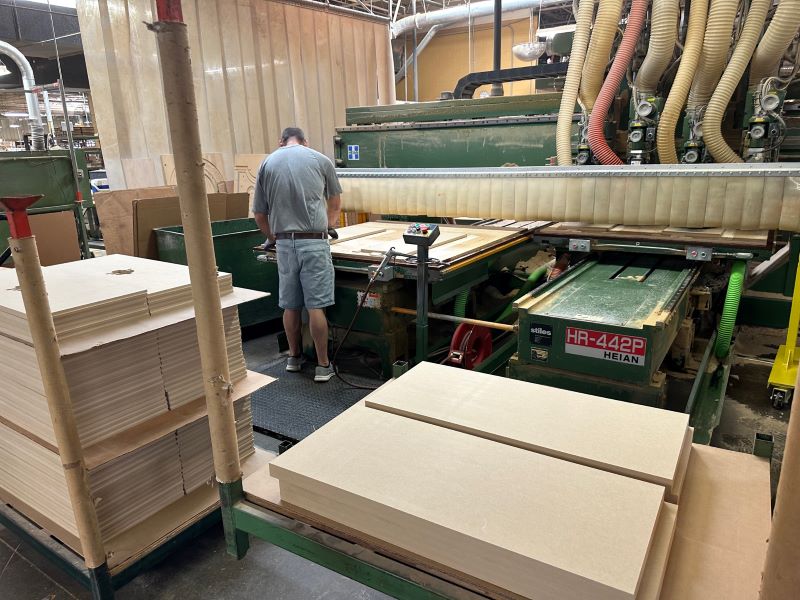
The production of wood panels is an important step that helps illustrate the vertical nature of the Howard Miller plant.
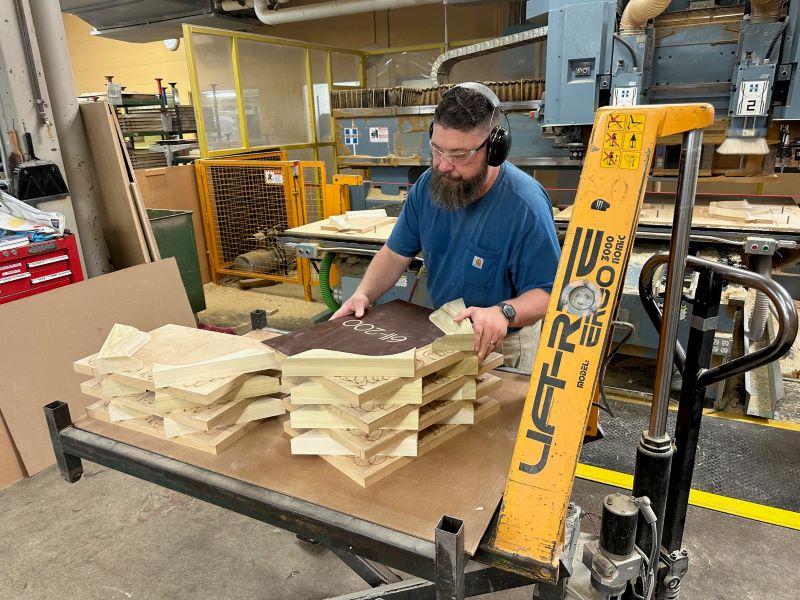
Parts processing is a major aspect of the wood furniture production process at Howard Miller, further illustrating the vertical nature of the manufacturing operation.
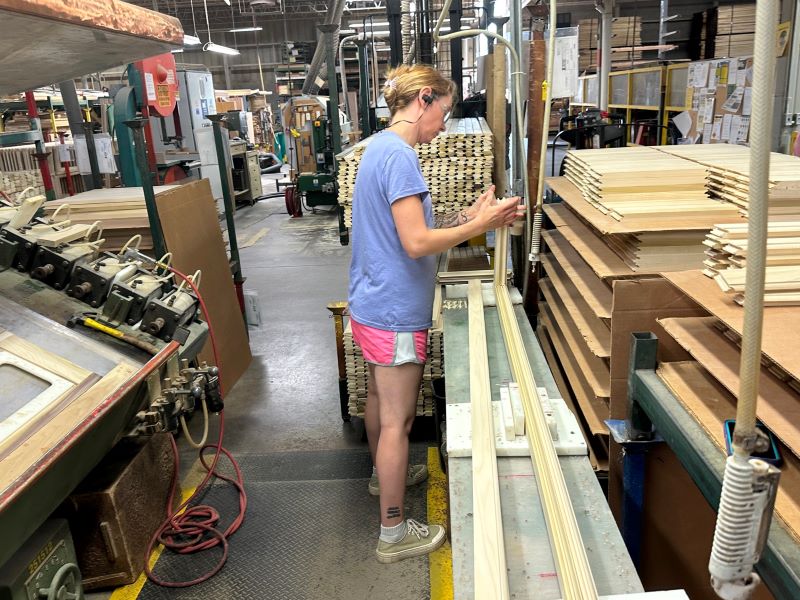
The shaping of components with sophisticated joinery techniques is an important aspect of the quality construction that Howard Miller and Hekman offer in their wood lines.
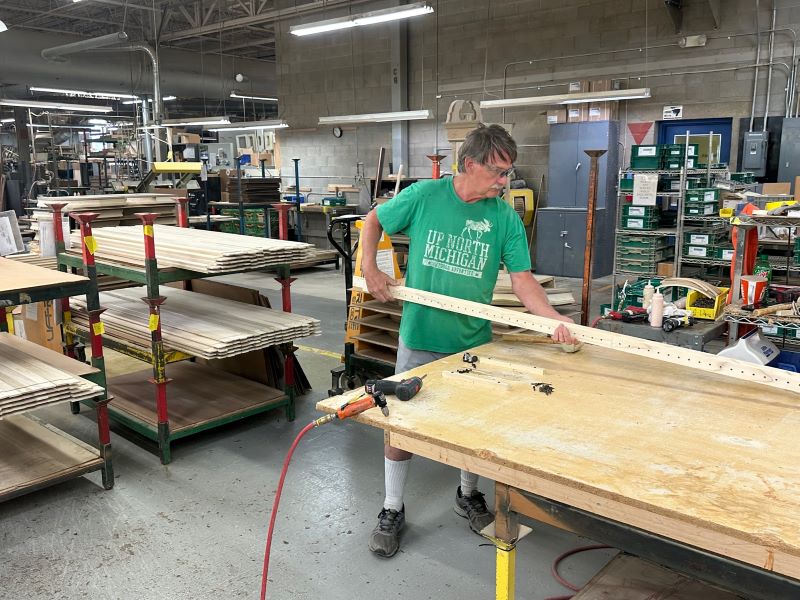
Stacks of wood parts are ready to be further incorporated as components into clocks and curio cabinets.
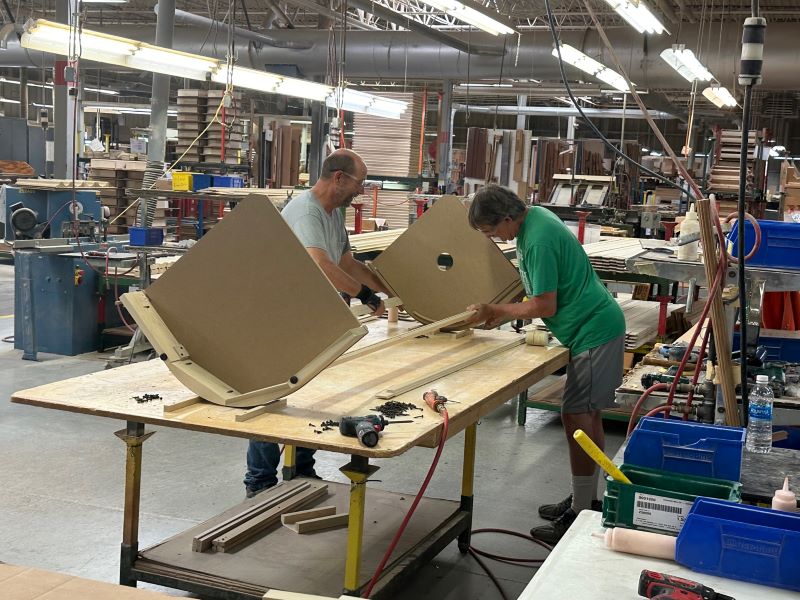
Workers are seen building the frame of a curio display cabinet. The domestic plant is perfectly suited to produce this type of unit as it would not be efficient to ship these fully assembled units from overseas as they contain a lot of open space (also called air) in their interiors.
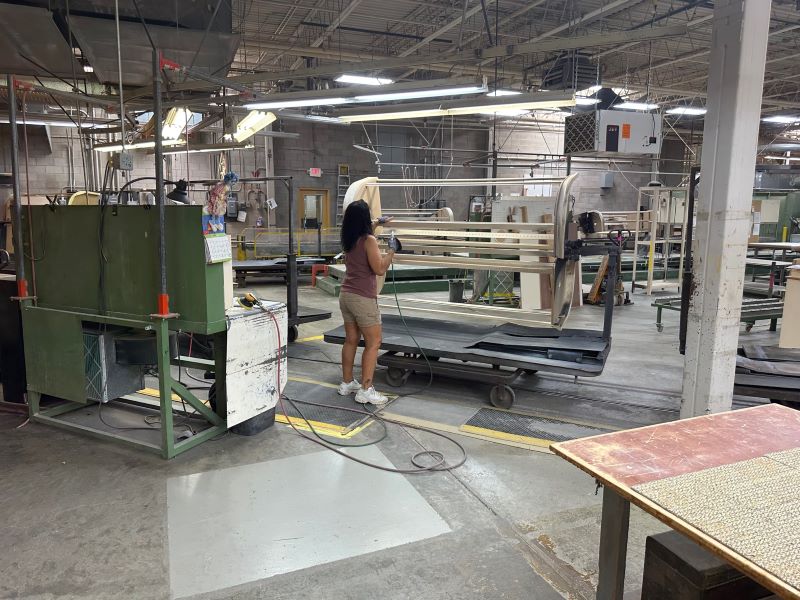
Here the frame of a curio cabinet is being sanded and sprayed to remove excess dust before it heads to the finishing line.
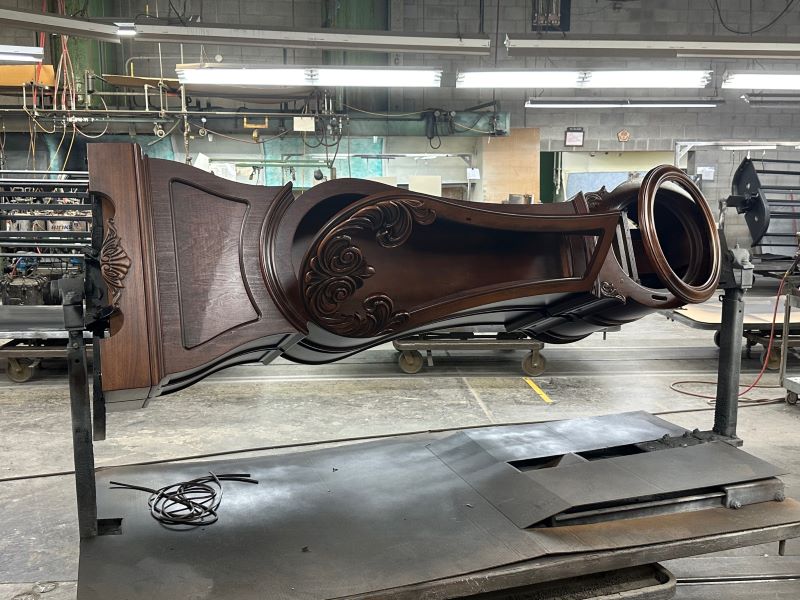
A popular floor clock model is seen coming off the finish line for further assembly, including the installation of the clock mechanism.
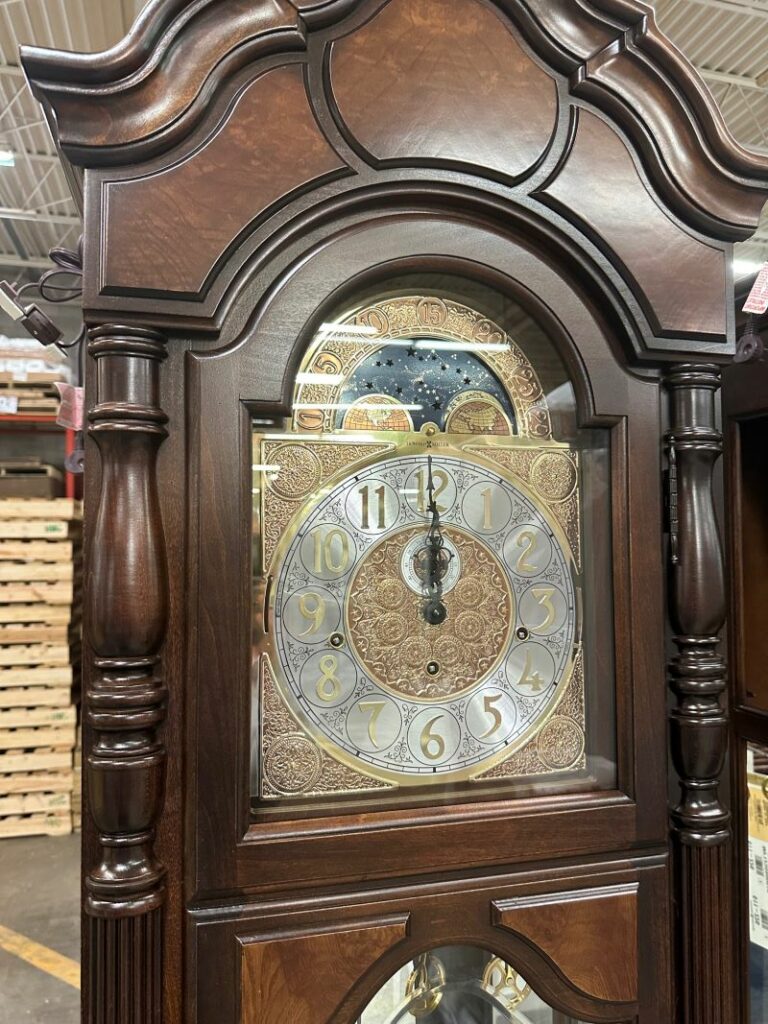
This floor clock complete with the clock mechanism is nearly ready to be packaged and shipped.
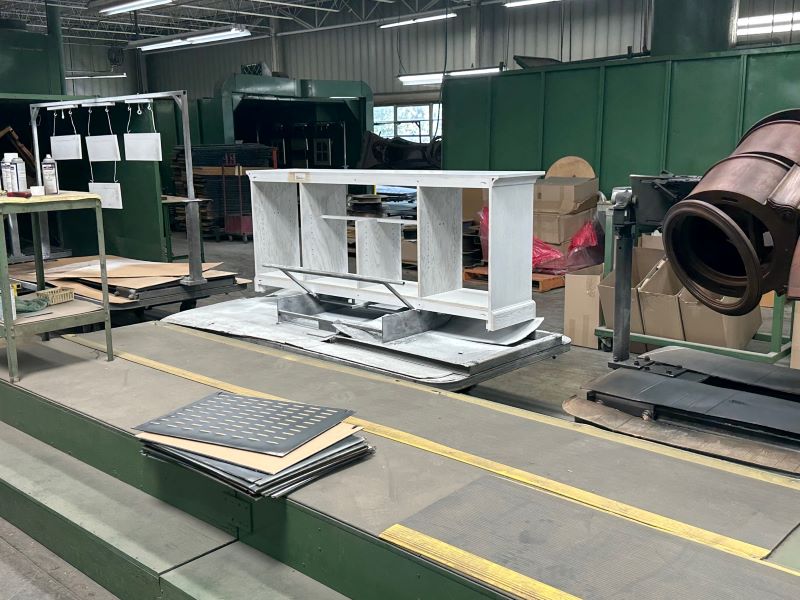
A console in antique white finish is seen coming down the line for further assembly. Note that it is coming down the line right behind a floor clock. In many years past, there would be hundreds of clocks or pieces that were mass produced coming down the line at at time.
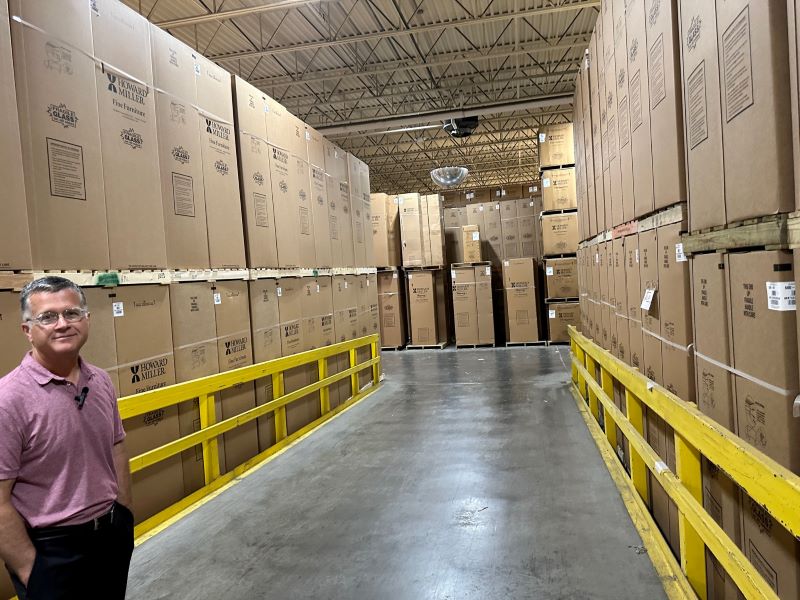
Mike Wallace, vice president of manufacturing operations, is seen in the company’s adjacent warehouse with finished goods that are ready to ship.





